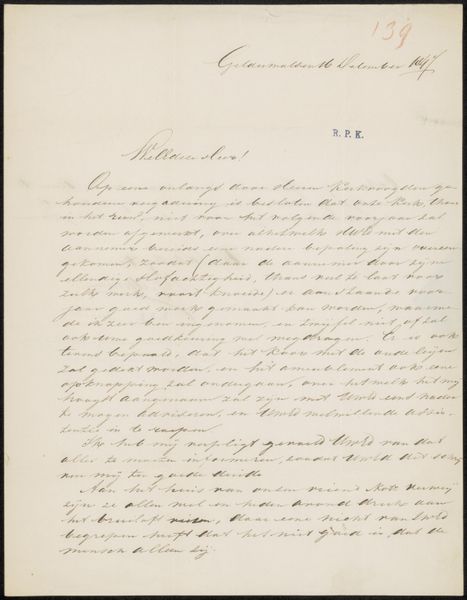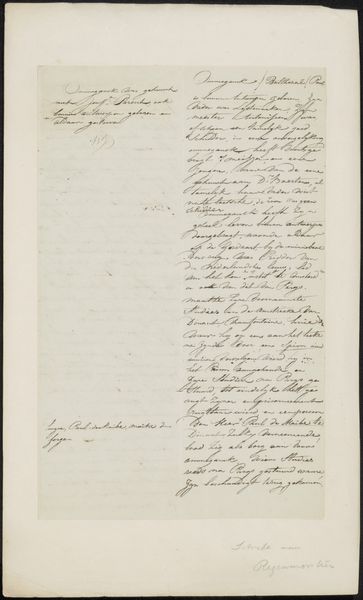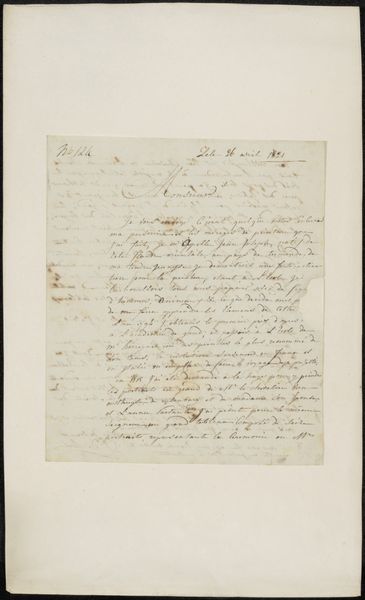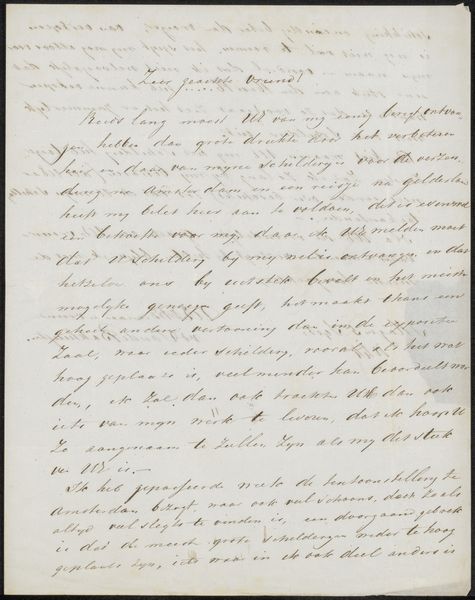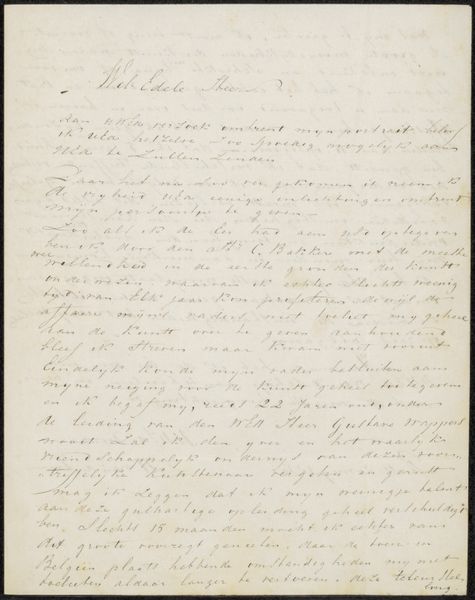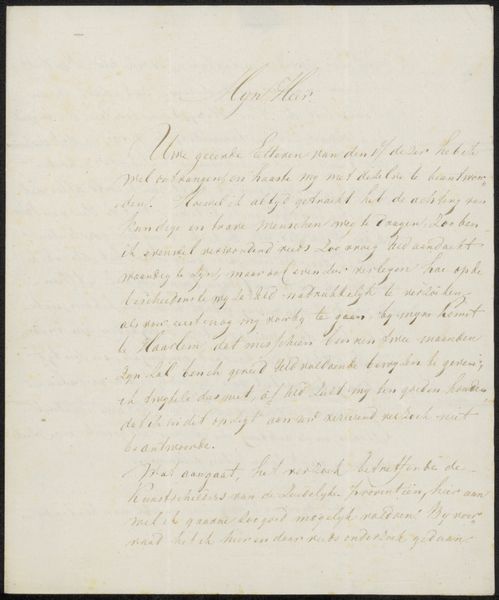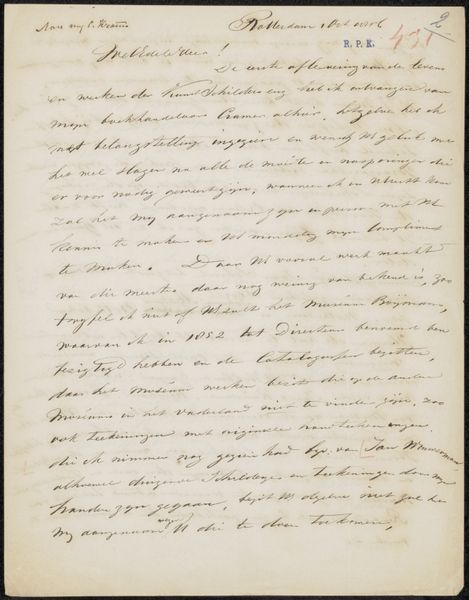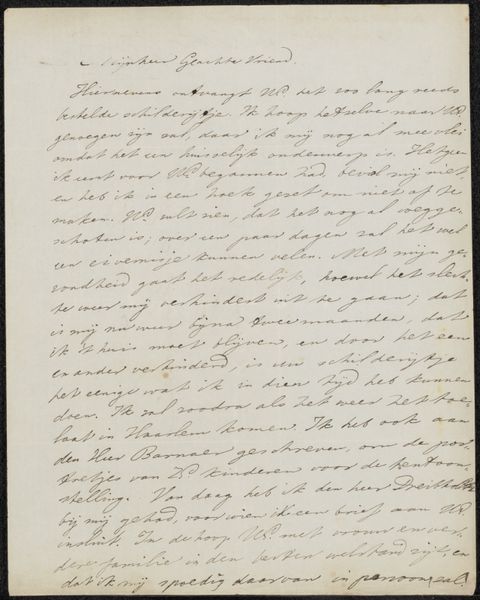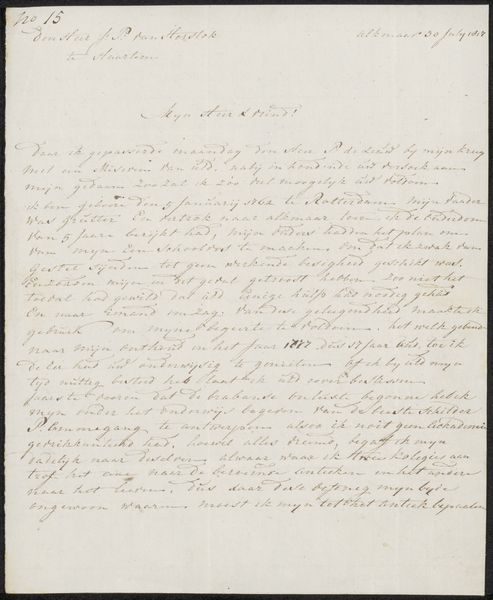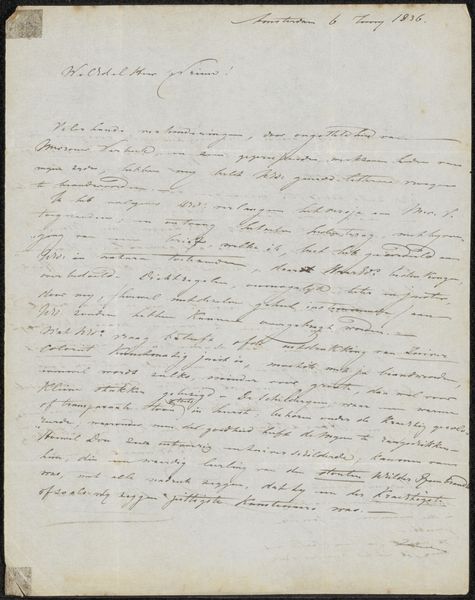
drawing, paper, ink, pen
#
drawing
#
paper
#
personal sketchbook
#
ink
#
intimism
#
romanticism
#
pen
Copyright: Rijks Museum: Open Domain
Editor: Here we have “Brief aan anoniem,” or “Letter to Anonymous,” potentially from 1850-1851, by Jan Hendrik van de Laar. It's ink on paper, a personal note of some kind, presented in a very intimate style. What strikes you when you look at it? Curator: What I see is the powerful vulnerability of unseen communication, which raises complex questions. This work is from an era of emerging mass literacy. Writing shifts from the domain of the powerful and the elite toward everyday practices, opening up different pathways to express identity. To whom would van de Laar address a letter anonymously? And why? Editor: It’s hard to tell, isn’t it? It almost feels like overhearing a secret. What does that anonymity say about relationships at the time? Curator: Precisely! It suggests unspoken social and personal constraints. We could understand it in terms of gender dynamics, for example. Consider the social roles afforded to different genders and classes in that era and how hidden messages might have operated as crucial sites of communication, potentially disruptive communication. Is this person being protected, or is this person being shamed? Editor: I never considered that! It feels almost revolutionary. Thank you! Curator: It's been a pleasure. I'll certainly ponder how letter writing can enable new communities of expression, both then and now.
Comments
No comments
Be the first to comment and join the conversation on the ultimate creative platform.

